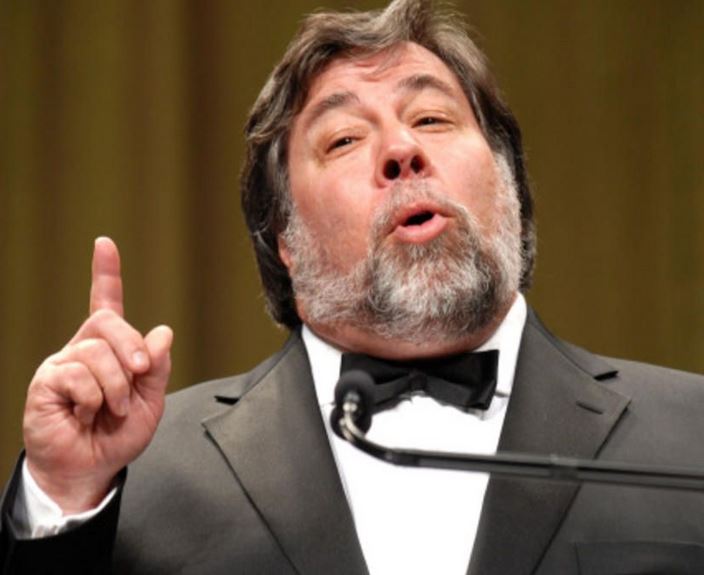
Steve Wozniak, a name that will be forever etched into the walls of tech history. He is the man at the engine room of Apple, the mind that brought the first Apple device to life, the designer of the famous Apple II and a pioneer of technology culture.
He has achieved many impressive things, he is an electronics engineer, an entrepreneur, a programmer and a philanthropist. ‘The Woz’ as he has been famously nicknamed, has recognised the importance of giving back, having himself turned to teaching after his time at Apple based on the respect he had for teachers that helped him in his formative years.
Although Wozniak and Apple ultimately parted ways, it will be impossible to ever truly separate the two names. In the mid-1980s he decided his place was no longer among the companies ranks, but the great has never been erased from the Apple employee list; read on to find out why Steve Wozniak holds an unquestionable place in our Tech Hall of Fame.
The seed of the Apple
While Steve Jobs is hailed as an idol synonymous with Apple technology, it was Steve Wozniak who designed the Apple 1 operating system, hardware and circuit board designs as well. In doing so, the Californian electronics engineer breathed life into technology that is still evolving today.
 At the time Wozniak was working for HP, the company that he made five different attempts to offer his creation to without successful uptake. With his important creation having been rejected, it fell to Jobs to push the project forward, deciding to sell the Apple 1 as an assembled circuit board. This led to iconic images of the ‘Apple 1 in a briefcase’, a glimpse into the future of what Wozniak’s design would achieve.
At the time Wozniak was working for HP, the company that he made five different attempts to offer his creation to without successful uptake. With his important creation having been rejected, it fell to Jobs to push the project forward, deciding to sell the Apple 1 as an assembled circuit board. This led to iconic images of the ‘Apple 1 in a briefcase’, a glimpse into the future of what Wozniak’s design would achieve.
Jobs persuaded a reluctant Wozniack and all of a sudden the historic journey began, with the two of them building circuit boards in a bedroom and garage, having funded their entrepreneurial mission by selling a van and a calculator.
Apple II
Also designing the Apple II, Wozniak made a new breakthrough with this latest device, the ability to offer users a colour display, a feature that played a major part in the progress of the computer. With an on board programming language on board, the Apple II was poised to change the world’s understanding of computers.
These features contributed to another major first achieved by the Applie II, its massive global popularity it would experience during its life time that set a benchmark for the future of computing and brought a new, digital aspect to human life.

Moving fast to achieve their goals, the Apple III was launched in the same year as its successful predecessor. The trajectory of success was not however maintained by the third edition, and it was believed that this is due to a lack of the engineering purity that the second model was founded upon.
Celebration of technology
Not only did Steve Wozniak almost singlehandedly design and build one of the structural pillars of modern computing, he also encouraged and drove the appreciation of evolving technologies separately to his designs.
Working with Bill Graham, Wozniak founded and sponsored two festivals in the United States that ultimately ingrained computing as a part of 20th century culture. Alongside rock music, the festivals were used to spread an educational message on technology, ushering in the future.

Some of the acts that performed across the two festivals were The Police, The Kinks, The Ramones, Fleetwood Mac, David Bowie and Ozzy Osbourne, linking technology to the youth culture of the day and exposing a new generation to computing.
The end an era
It was at this point in 1985 that Steve Wozniack made the decision to leave Apple, acting on the feeling that he no longer had a place at the company and that he missed the purity of the early days of engineering. The growing and successful company had brought about a need for management, a role that Wozniack did not want to perform.
Top 5 automation use cases for the future
Intel chases quantum computing breakthrough with silicon processor
UK mobile coverage to be enhanced by divine intervention?
He was accelerated toward his decision to depart by the fact that the Apple II gained no mention in the 1985 annual meeting, with no word attributed to any aspect of the division or those that worked within it. It seems as though this above all symbolised to Wozniak that he too was no longer fitting in.
What has ‘The Woz’ been up to ever since?
After turning the page on the Apple chapter of his life, Steve Wozniak set off on a journey of personal achievments that were deeply important to him. He began by returning to UC Berkeley to finish his degree.
He also had an ambition to return the service that he had received from teachers in the formative years of his life. Wozniak shared his knowledge and skills in the teaching of elementary school children between the fifth and ninth grades, while also helping teachers to benefit from the new world of technology.

Providing another example of his innovation and foresight, Wozniak ventured into GPS technology, starting the company Wheels of Zeus, the acronym of which just so happens to be Woz. Just five years later the company was closed, at which point Wozniak joined fellow Apple alumni, Amelio and Hancock in the setting up of a holding company for tech acquisitions. This company was called Acquicor Technology. Up until 2014 he was chief scientist at Fusion-io, after which in 2014 he became the chief scientist at Primary Data.






